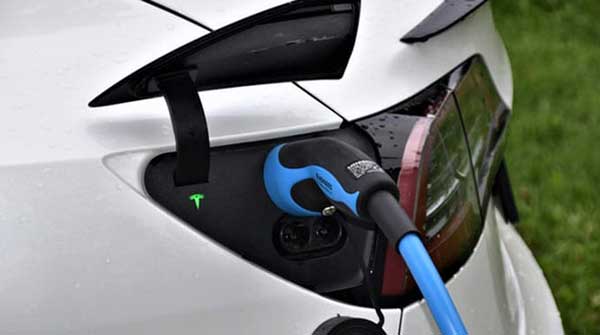New battery development promises five-minute phone and 10-minute car charging
Researchers at McGill University and Université du Québec à Montreal (UQAM) have developed a novel technique to create cost-effective batteries with both high storage capacity and rapid rechargeability.
The advancement centres on enhancing lithium-ion batteries, the rechargeable cells prevalent in electric vehicles, power tools, and mobile phones.
 Jeremy Dawkins |
 Bastian Krueger |
Jeremy Dawkins, a McGill researcher and the lead author of a study recently published in ChemElectroChem, stated, “The work we’ve done at the CLS ( Canadian Light Source) could lead to faster-charging batteries, expediting their real-world application.”
Investigating a battery’s performance necessitates an inside look during its operation. While this presents difficulties in most laboratory settings, the CLS synchrotron at the University of Saskatchewan offers the robust X-ray illumination essential for observing an active battery.
Dawkins explained the variety in lithium-ion batteries, which consist of diverse materials that can be adjusted for optimal outcomes. UQAM’s battery expert, Bastian Krueger, added, “We’re aiming to blend two materials, drawing on the advantages of each. Ideally, one material ensures swift charging, while the other ensures significant capacity.”
By integrating a recognized rapid-charge material with one of high capacity and experimenting with their combination techniques, the team made a breakthrough. Employing the CLS, they could visualize the lithium ions, often a restricting factor in fast charging. This visualization enabled real-time monitoring of the battery’s chemical changes during charging. Their findings revealed that a layered, or “sandwiched,” composition was most effective.
Dawkins highlighted the battery’s unique layered structure: “The lithium ion navigates more efficiently within the cell, facilitating rapid charging – crucial for endeavours like charging a phone in five minutes or an electric vehicle in 10.”
| Staff
The opinions expressed by our columnists and contributors are theirs alone and do not inherently or expressly reflect the views of our publication.
© Troy Media
Troy Media is an editorial content provider to media outlets and its own hosted community news outlets across Canada.

